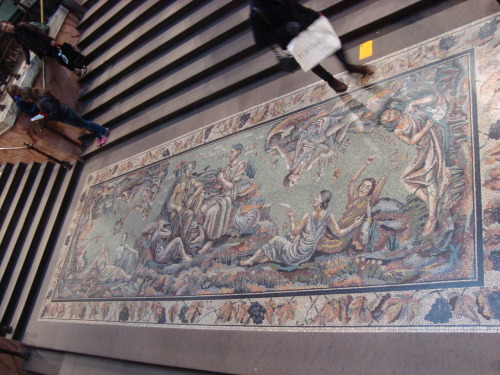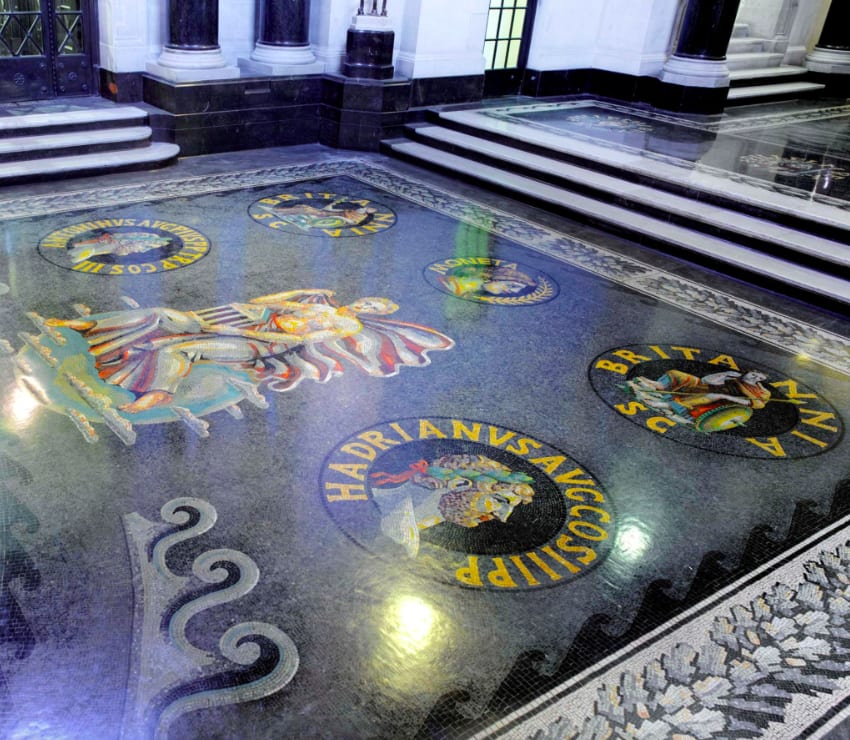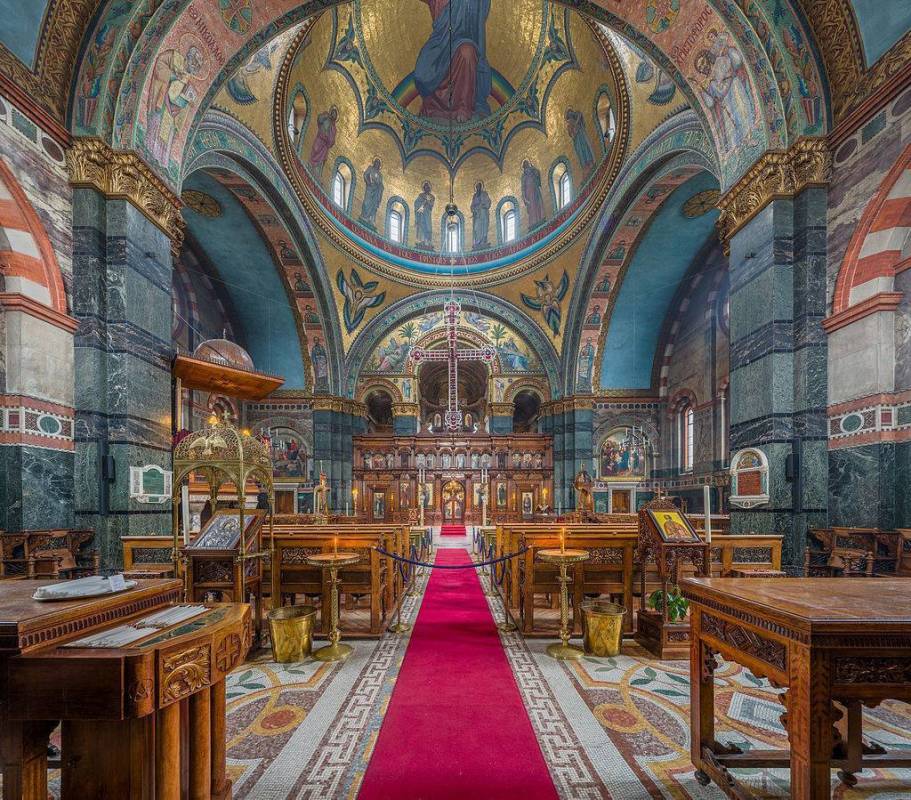Hidden in plain sight:
A guide to the London mosaics of Boris Anrep.
By Elle Anderton, Intern
If you have ever visited the National Gallery, set foot inside the Bank of England, or visited Westminster Cathedral, you will have – perhaps unwittingly – walked upon and glanced at the mosaics of Boris Anrep. Philip Mould & Company had the pleasure of presenting an extremely rare example of Anrep’s skill at this year’s Frieze Masters art fair, which is the only example of his work to appear on the secondary market since the artist’s death in 1969.
Born in St Petersburg in the autumn of 1883, Anrep soon left his birthplace to study art at the renowned Académie Julian in Paris. However, it was not the modernity of Paris’ art scene that truly allowed Anrep’s art to flourish, and instead he found inspiration from the ancient capital of the Western Roman Empire, Ravenna, in Northern Italy. Whilst visiting in 1904, Anrep became entranced by the Byzantine mosaics, which formed the catalyst of his life-long passion for producing intricate mosaics. Anrep’s art is unique in its ability to combine an interest in Russian icons and the Byzantine tradition, with developments in modern art happening within his lifetime, culminating in the mastery of an ancient craft which he revitalised for the modern era.
Despite Anrep’s distinctive approach to modern art, his works are often overlooked, due to their positioning largely on the ground of national buildings and religious institutions. Yet, in London alone, Anrep’s mosaics number in the tens. Therefore, it is high time that Anrep’s skill and creativity is acknowledged in full, and in order to do this, we merely need to cast our eyes downwards.
The National Gallery
Described by Anrep as being a philosophical cycle, the four mosaics created for the National Gallery are probably Anrep’s most famous commission and were created between 1928 and 1952. One of these mosaics, The Awakening of the Muses, produced in 1933, displays Anrep’s talent for combining new and old. The mosaic depicts the Muses of classical antiquity as contemporary figures, with Clio, the Muse of history, acting as a portrait of the novelist Virginia Woolf. Amongst the Monet’s and Titian’s present upon the gallery’s walls, these mosaics contribute to the stellar art on show and should not be missed.

Tate Britain
The National Gallery is not the only artistic hub to feature Anrep’s work, with Tate Britain featuring a mosaic by the artist in Gallery II. The mosaic was commissioned in 1921, after the original floor had been damaged due to a bombing raid in the First World War. Consisting of eight panels, the mosaics are based on The Proverbs of Hell from The Marriage of Heaven and Hell by William Blake. Imbued with fiery red, orange and yellow tones, the mosaic displays Anrep’s modernist approach to colour and form, influenced heavily by Matisse’s bright and imaginative colour palette.

Westminster Cathedral
A stone’s throw away from Victoria Station, Westminster Cathedral is the heart of Catholicism in London. The cathedral was built between 1895 and 1903 in a distinctly Byzantine-inspired style; however, much of the interior mosaic decoration remains unfinished today. Anrep completed his mosaics during the 1950s, and in scale and subject they reflect his versatility in this rare and unusual medium. Anrep chose numerous Eucharistic themes for his portion of the cathedral’s decoration, such as the sacrifice of Abel and the wedding feast at Cana, a story in the Gospel of John where the first miracle attributed to Jesus occurs. The religious theme of Anrep’s designs highlight his own innate spirituality and showcase his uncanny ability to infuse spiritual meaning into his art.

Bank of England
Inaccessible to the general public today, these mosaics would have once been seen by everyone and anyone who entered the Bank of England. In tune with their surroundings, the mosaics have a heavily monetary theme, depicting the history of coinage within the United Kingdom. Here, Anrep again harks back to his passion for the art and civilisation of classical antiquity, illustrating stylised imagery of Roman coins. Curator Kirsty Parsons has suggested that Anrep’s choice to depict Roman coinage not only represents his love for the past, but also his incredibly modern perspective on capitalism, evoking an ancient, more primitive monetary system.

The Greek Orthodox Church of Saint Sophia
The Saint Sophia Cathedral is another religious space in a Neo-Byzantine design. Initially, the church was planned to have frescos adorn its walls, however the damp climate of London prompted the exploration of alternative options, and therefore in 1926 Anrep was commissioned to produce a series of mosaics. Once again, his spiritual nature shines through in his depictions of the incarnation of Christ and the mystery of the Eucharist. Finally, we are able to view Anrep’s artistry displayed on walls, as opposed to laid into the ground. Here, we can view his commitment to abstract and flattened, two-dimensional forms without looking downwards, similarly to Philip Mould & Company’s presentation of Anrep’s Spirit of Reasoning.

This selection of mosaics are merely a taste of Anrep’s craft, with other examples of his work being found in Mottisfont Abbey in Hampshire and Mullingar Cathedral in Ireland. The scope and quality of his work marks Anrep as not only one of the most progressive artists of his generation, and all one needs to do to appreciate his talent is to remember to look down.





